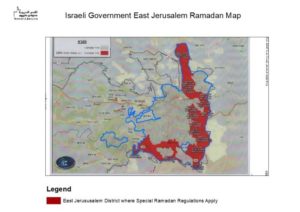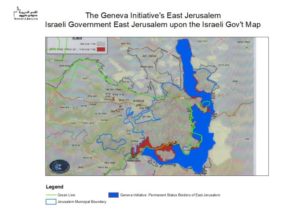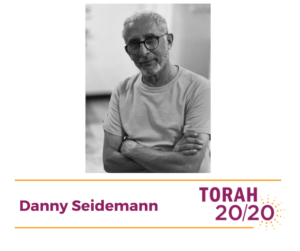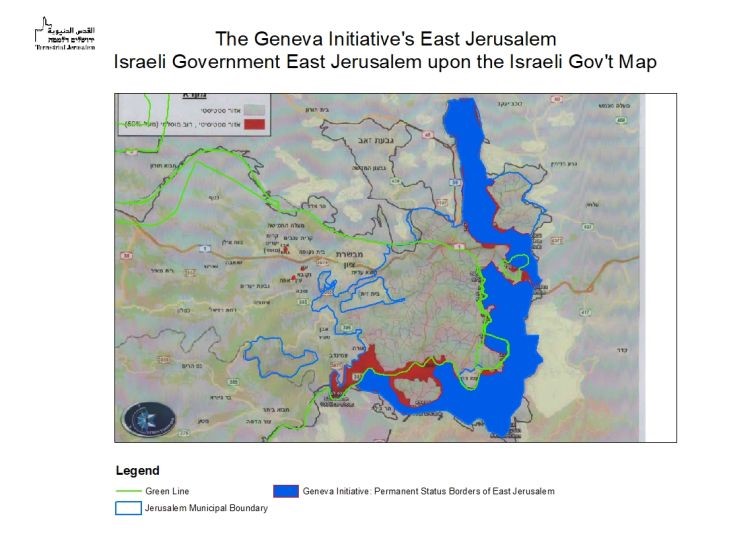A d’var Torah for Yom Yerushalayim by Daniel Seidemann.
Jerusalem Day, Yom Yerushalayim, which is this coming Friday, was created by the Israeli Chief Rabbinate, the Rabbanut, in the wake of the 1967 war, and subsequently enshrined as a national holiday under law. A religious commemoration of the “reunification” of Jerusalem when Hallel is said, the day has subsequently been coopted by Israel’s religious, nationalistic right, and most traditional, moderate, and secular Israelis relate to the day with apathy, some with disdain. That said, the day reflects something profound about the approach of official Israel to Jerusalem.
This celebration of “undivided Jerusalem” has not merely been relegated to a symbolic day of worship. In the 53 years since Israel’s annexation of East Jerusalem, Israeli policies have been driven by this article of faith: Largely by massive settlement construction, Israel has sought to assure a robust Jewish majority in Jerusalem, and to create facts on the ground that will render it indivisible, while neutralizing and at times expunging the Palestinian character of the city, which is so important to the historic, cultural and religious integrity of Jerusalem.
So half a century after annexation, Jerusalem is indeed the “eternal undivided capital of Israel” and more Jewish than ever before, right?
Wrong.
Annexation has failed, and “united Jerusalem” is a hollow myth. In spite of Israel’s massive efforts, Jerusalem is more divided, more binational, and less sustainable than at any time since 1967. It is also less Jewish than before, not only demographically, but in the way that counts most: the Jewish character of the city and the values that govern it.
Israel’s efforts to galvanize a robust Israeli majority in an “indivisible” city have radically changed the face of East Jerusalem. However, the Israeli objectives of a large Israeli majority in a united city have not been achieved.
In spite of all efforts, the Palestinian sector, 25% of the population in 1967, has today grown to almost 40%, numbering 350,000 souls. Jerusalem is more binational than ever before.
Furthermore, the city is more divided than at any point since 1967. And it is divided in more ways than one.
Sign up to receive Torah 20/20 in your inbox each week.
Physically, the borders between Israeli Jerusalem and Palestinian Jerusalem have never been starker. We live in different neighborhoods, walk different streets, speak different languages, and study in separate schools. Israelis rarely venture into East Jerusalem, and Palestinians go to the West only when it’s absolutely essential.
To see how “undivided” Jerusalem really is, one need go no further than the statutory map released by the Israeli government designating the areas of Palestinian East Jerusalem in which special Covid 19 regulations apply, mostly but not exclusively during Ramadan, which ends this weekend. This map is virtually identical to the map of those areas sealed off from Israeli Jerusalem on Yom Kippur. And the is a map worth comparing to the maps of those who seek to divide Jerusalem in a permanent status agreement, such as the simulated Geneva Initiative agreement.
Find the differences. There are none. Both display a divided Jerusalem.


As stark as this physical divide may be, it is not the most consequential one gripping Jerusalem. There are two national collectives in Jerusalem, one of which, the Israeli, is politically empowered, and the other, the Palestinian, which is permanently disempowered. The Palestinians of East Jerusalem are not citizens of Israel. They have no Israeli passports, nor may they vote for the Knesset. Their political leadership is a best harassed, and often expelled, arrested, or imprisoned. Any Palestinian political activity more radical than a scout meeting, however non-violent, is systematically broken up.
Read more divrei Torah on Yom Yerushalayim.
This permanent political disempowerment expresses itself in every walk of life. There is a shortfall of 2000 classrooms in East Jerusalem, denying tens of thousands a free, public school education. Since 1967, Israel has built 55,000 government-sponsored residential units in East Jerusalem for Israelis, less than 600 for Palestinians. The Palestinians, 40% of the populace, receive less than 12% of the budget.
The Jerusalem provisions of President Trump “deal of the century” are built on foundations virtually indistinguishable from those underlying Israeli policies since 1967. Israelis have rights in Jerusalem, Palestinians have needs. Rights are inalienable, to be fulfilled here and now; needs are to be addressed, often by magnanimous third parties, as a reward for good behavior, and in due time. In the West Bank, Palestinians possess, at best, a diminished, truncated nationalism; in East Jerusalem, the Palestinians are virtually denationalized. The term Palestinian is never used in the context of the Palestinians of East Jerusalem. They are Muslims or Arabs, never Palestinians. Their national symbols, including the PLO’s former headquarters at Orient House, have been expunged and their religious equities marginalized.
The Israeli policies and the Trump proposal offer the Palestinians of East Jerusalem the same devil’s bargain: shed your national identity and a magnanimous Israel will “reward” you with certain material benefits. Otherwise you will be crushed. In other words – both entail perpetual occupation. Both are built on the foundations of an occupation that the occupier and the United States are not able to address because they are unwilling to recognize it exists.
Occupation is not merely a mechanism of governance, control, and domination. It injects itself into every fiber of the human experience of the occupied, indicating that the occupier views and treats the occupied as imbued with diminished humanity.
Diminished humanity is the antithesis of being created in the image of God.
A house divided against itself – half occupied and half free – cannot stand.
The rabbis of the Mishnah knew this when they decreed that a person should not be subjected to being half-free and half-slave, and thus unable to function in either setting (Mishnah Gittin 4:5). And by extension, a city so divided cannot possibly be “Zion redeemed with justice” (Isaiah 1:27).

The purported annexation of East Jerusalem undermines rather than enhances the Jewish character of the city, and such will be the fate of any future West Bank annexation, should, God forbid, it take place.
Daniel “Danny” Seidemann, a lawyer by training, is the founder and executive director of Terrestrial Jerusalem and a world-renowned expert on the geopolitics of Israel.

